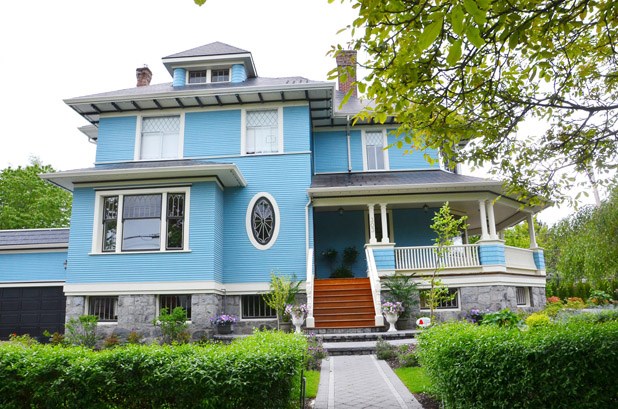A two-tiered heritage conservation area in Queen’s Park will be considered at a public hearing in June.
During a two-and-a-half hour workshop on Monday, council supported a “medium protection” option that would see homes divided into two categories, with pre-1900 to 1940 homes getting “advanced” protection and home built in 1940 and later getting “limited” protection.
* Advanced protection requires owners to get heritage alteration permits for: major construction activities on the front, sides or visible roofline of the building; demolition of the existing building; construction of a new building; and subdivisions or consolidation of the lot.
* Limited protection exempts existing buildings from heritage protection and would only require homeowners to get heritage alteration permits for construction of a new building and subdivision or consolidation of the lot.
Not all councillors, however, are completely happy with the plan.
Staff had recommended an option that would have seen pre-1900 to 1949 homes placed in the advanced category and homes built in 1950 and later going into the limited category, but council voted to put 1940 and newer homes into the limited category. Mayor Jonathan Cote and councillors Patrick Johnstone, Mary Trentadue and Lorrie Williams supported that option, but councillors Bill Harper, Jaimie McEvoy and Chuck Puchmayr preferred offering more protection to homes built between 1940 and 1949 and leaving them in the advanced category.
“For me, it was a practical consideration to say what is going to make a heritage conservation area most successful after it is adopted,” Cote later told the Record. “Very well, some of them might have some important heritage but could cause some more challenging discussions early on after adoption of the heritage conservation area.”
Council is set to get reports on a couple more aspects of the conservation area, including design guidelines, on May 1. That will be followed by two readings of a bylaw on May 15 and a public hearing on June 13.
“That date is important because the day after the public hearing date is when the control period ends,” Cote said of the process that’s been underway for a year while the city considers a conservation area. “It’s always been the city’s goal to conclude whatever we are going to propose in the heritage conservation area before that date. I think we are moving towards that.”
At Monday’s workshop, council also discussed different types of incentives that could be considered for heritage conservation, including administrative incentives, financial incentives such as municipal grants and reduced fees and charges, and zoning-related incentives such as additional density or stratification of larger homes into multiple residential units.
While council is interested in having an incentive package included in the conservation area, Cote said there’s not enough time to get that done properly before the public hearing. He said that work would be done later and attached to the heritage conservation area.
At a recent meeting, council heard from more than 20 Queen’s Park residents, including those who support and oppose the plan. One of the major reasons cited among opponents is that it will negatively affect their property values.
Jay Wollenberg from Coriolis Consulting attended Monday’s workshop to discuss the potential impacts that a heritage conservation area could have on property values, as his company provided analysis for heritage and character areas in Vancouver. While he cautioned New Westminster not to make any generalizations about Queen’s Park based on the analysis done in Vancouver, he noted that it could be demonstrated that even if some owners’ property values went up in a conservation area, some may not.
“The impact on property values is not a black and white issue, by any regard,” Cote later told the Record. “What I really take out of it is a large number of properties are likely to be completely unaffected, but there are some properties, based on the style of the house, the size of the lot compared to the house that could very well have an impact that is different than the overall average.”



